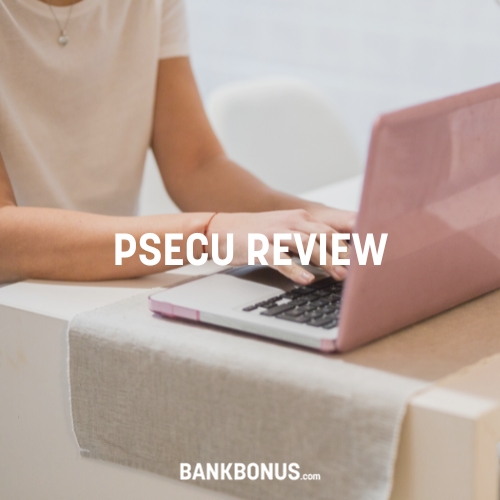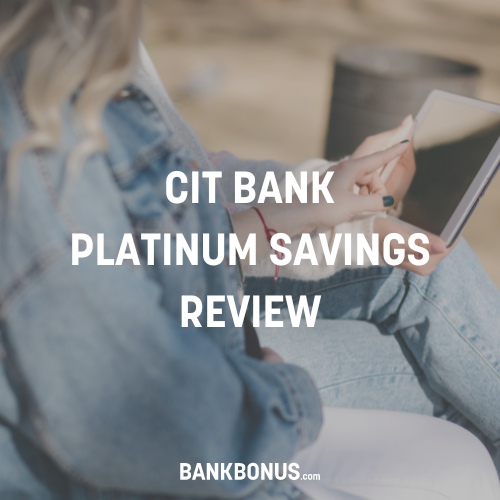Truist Bank is among the largest U.S. banks in total assets, which is surprising considering how new it is. But while Truist doesn’t have widespread recognition, it is a compelling option for those who want an alternative to the giants.
In this post, you’ll learn everything you can expect from banking with Truist, including its popular account options and most impressive features. We’ll also weigh its pros and cons. Truist Bank reviews should give you a pretty good idea of whether or not you can trust your money with Truist, and that’s what we aim for with this post.
What is Truist Bank?
Unlike many big banks we review, which tend to date back a century or longer, Truist was established in 2019.
While it might sound strange for such a big bank to be so new, the explanation is simple: Truist Bank resulted from a merger between BB&T and SunTrust Bank. Both of these banks trace their roots back to the late 1800s, and in coming together, they created Truist Financial, a top ten bank in the U.S.
Truist offers a full suite of financial products, such as bank accounts, investment and retirement services, auto loans and mortgages, and wealth management. Truist serves customers in 17 states, as well as Washington, DC.
Truist is Available in the Following states:
- Alabama
- Florida
- Georgia
- Indiana
- Kentucky
- Maryland
- New Jersey
- North Carolina
- Ohio
- Pennsylvania
- South Carolina
- Tennessee
- Texas
- Virginia
- West Virginia
- Washington D.C.
Don’t see your state listed? No problem; check our list of best banks for each state to find the best bank for your financial needs.
Truist Bank Checking Accounts
Truist currently has two checking accounts available:
Truist One Checking
Truist One Checking is the bank’s flagship checking account. It’s a good fit for most basic checking needs.
You need a minimum deposit of $50 or more to get started. The account comes with a debit card, online and mobile banking, and a tiered set of perks based on your average monthly balance.
The more money you keep in your Truist One account, the more benefits you can earn. These include cash-back bonuses on Truist credit cards, overdraft buffers, free checks, and monthly fee waivers.
The account has a $12 monthly service fee, but Truist provides five ways to avoid it. The simplest way is to receive direct deposits of $500 or more each month, but students under 25, as well as small business banking and credit card customers, will also get the account for free.
Truist Confidence Checking
Truist Confidence Checking Account is a solid option for those looking to build a financial foundation. There are no overdraft fees or paper checks, so the account encourages customers to spend only what they have on hand.
There’s a $25 minimum balance requirement to open the account. There’s also a $5 monthly maintenance fee, so it isn’t quite a free checking account, but you can waive it if you receive monthly deposits of at least $500 or make at least ten qualifying transactions per month.
The account offers online and mobile banking access, plus account alerts and credit score monitoring to help you stay on track.
Truist Bank Savings Accounts
Truist Bank reviews should always include thoughts on savings accounts. If you are in the market to save money, Truist has several different savings account options, including online savings, MMAs, and CDs. You are sure to find an account for your needs.
Truist One Savings
Truist One Savings is a basic savings account that requires a $50 opening deposit and has an avoidable $5 monthly fee. You can avoid the fee with a daily account balance of $300 or more, a $25 recurring preauthorized transfer, or having a linked Truist checking account. They also waive the fee for savers 18 years or younger.
Overall, Truist One is the best fit for those who are just getting started with their savings journey. The 0.01% annual percentage yield (APY) is nothing exciting, so this isn’t a good option for those with higher balances.
However, the account is easy to use and pairs well with Truist checking, so it can still serve as an excellent starter savings account.
Truist Confidence Savings
To open a Truist Confidence Savings account, you need the Truist Confidence Checking account. The two accounts complement each other, and the savings account aims to address the same goal of building a financial foundation.
There are no monthly fees, no overdraft fees, and no returned item fees. This way, account holders can build a financial foundation without worrying about getting nickel and dimed with charges.
Unfortunately, the account comes with the same paltry 0.01% APY, so this is not a good choice for those looking to earn interest on their savings.
Learn More:
Truist One Money Market Account
Overall, the Truist One Money Market is like the Truist One Checking with an interest rate. It has the same avoidable $12 monthly fee and the $50 minimum opening deposit. Plus, you can directly draw funds from your money market account with a debit card or checks.
One Money Market technically operates on a tiered APY system, but unfortunately, each tier currently offers the same disappointing 0.01% rate. This means you won’t earn a better rate for depositing more in your account.
Learn More:
Certificates of Deposit (CDs)
Truist CDs are available in terms ranging from 7 to 60 months, but unfortunately, you can’t open one online, which is one of the downsides we want to bring to your attention in our Truist Bank reviews.
If you want to open a CD with Truist, you’ll have to pop into your nearest branch to get started. Much like the Truist One Money Market, Truist CDs operate with a tiered APY depending on how long you commit and how much you deposit.
However, sometimes they offer the same low rate across all tiers. The interest rates change frequently, and you should always compare your options with other online bank opportunities.
Learn More:
Truist Bank Features
- Online Banking: Truist has a high-performing online banking platform, which you’d expect from a bank that’s so new. With online banking, you can monitor all your accounts, pay bills, and send money with Zelle.
- Mobile App: Handle your personal finances from your smartphone with the Truist mobile app. The app is extremely well-liked by current Truist customers and currently has a 4.4-star (out of 5) rating in the Google Play Store, and 4.7 stars (out of 5) in the App Store.
- Bank Branches: Truist has nearly 2,000 brick-and-mortar branches, with locations in each of its served states mentioned above.
- 3,000+ ATMs: In addition to its branches, Truist offers more than 3,000 branded ATMs. These locations allow customers to withdraw cash fee-free.
Pricing and Fees
In general, Truist handles its pricing in a way that you’d expect from a traditional bank of its size. Fees are just part of the deal. But fortunately, almost all of the charges with Truist are avoidable if you’re careful and aware of them.
Here are the most common fees you’ll find.
Monthly Maintenance Fees
Nearly all of Truist’s deposit accounts have a monthly fee. This isn’t ideal, but the good news is that there are ways to avoid each fee. It’s a little different for each account, but, in general, you can expect to hit a minimum balance or other monthly requirements to avoid paying.
ATM Fees
Truist ATMs are always free to use for Truist customers. You’ll pay a $3 ATM fee each time if you have to use an out-of-network ATM. This is on top of whatever fee the ATM itself charges, so it’s your best bet to stick to in-house options.
Overdraft Fees
Overdraft protection is one area where Truist stands out, with several of its accounts offering complete protection from any overdraft fees. However, it’s important to note that some of its accounts still retain these fees at $36 per overdraft. Keep this in mind as you choose the right account for you.
Getting Started
If you’re ready to sign up with Truist, you can find a nearby branch and set up an appointment, or you can just hop online and sign up from home.
Opening an account is simple and painless, and all you’ll need is your contact information, personal details, and bank account information for initial funding.
Like most big banks, Truist makes it quick and easy to get you on board, so you shouldn’t have any problems getting started as a new customer.
Promotions
Truist currently has two bonuses, one for a personal checking account and one for a business bank account.
- Earn $300 by opening a Truist One Checking account and depositing $1,000 within 90 days.
- Earn $400 by opening a Business Checking account and depositing $1,500 within 30 days.
Security
Truist Financial is an FDIC-insured institution, so all your deposits are covered up to the maximum amount.
On top of its banking services, Truist also features several online security measures to keep your money and personal information safe. These include proactive account monitoring, multi-factor authentication, and bank-level encryption.
Customer Support
If you need to contact a Truist customer service representative, you can reach someone at 844-4TRUIST (844-487-8478) on weekdays from 8 a.m. to 8 p.m. Eastern Time and from 8 a.m. to 5 p.m. on Saturdays. On Sundays, you’ll only have access to Truist’s automated assistance.
Pros and Cons
Pros:
- Wide range of accounts and services
- Top option for residents in the North, East, and Midwest
- Many in-person branches and ATMs (in 17 states)
- Solid overdraft protection
Cons:
- Unattractive savings rates
- Too many fees
- Limited coverage nationwide
- Questionable customer support ratings
Alternatives to Truist Bank
Bank of America
Bank of America (BoA) is one of the largest banks in the U.S., and it has a much larger service area than Truist. Otherwise, it’s similar to Truist, just on a larger scale. If you like the sound of Truist but you’re looking for something even bigger, Bank of America might be a good fit.
TD Bank
TD Bank is a regional provider mostly operating on the East Coast. Unlike Truist, TD is known for its award-winning customer experience, making it an appealing choice for those who value customer service ratings.
Chime
Chime is an entirely digital bank, and it’s a great alternative for those who want to earn more on interest than what Truist offers. Currently, you can score an APY of up to 2.00% with a Chime savings account.
Frequently Asked Questions
Is Truist a good bank?
It depends on what “good” means to you. Yes, it’s a big, reliable bank that’ll more than serve most basic banking needs. However, if you’re searching for a fee-free bank with high savings rates, Truist does not fit the bill. Instead of determining whether a bank is objectively reasonable, think more about what you need and what a bank can do for you personally. From there, it’ll be much easier to narrow down your options.
Is Truist better than Wells Fargo?
They’re similar in many ways. Wells Fargo has a greater presence in the West, while Truist is mostly located in the Southeast. So, depending on where you live, one bank might be a better fit for you than the other. Aside from location, you’ll see similar products and features with both banks, though Wells Fargo does command a much deeper account catalog.
What bank owns Truist?
Truist Financial, an FDIC-insured financial institution, owns Truist Bank.
Is Truist Bank Best for Your Financial Needs?
On paper, Truist is pretty much the prototypical big American bank. It’s by no means the worst bank you could work with, but it also doesn’t provide anything that significantly stands out. That said, if you live in its service area and value the reach of a large regional bank, it just might do the trick.
Depending on the banking experience you’re looking for, Truist could either be a perfect fit or fall well short of your expectations. To help make your decision, think about your wants and needs in a banking partner, and you’ll be ready to make the right decision.
And remember: When banks compete, your wallet wins.





Comments are closed.
Comments are closed here.